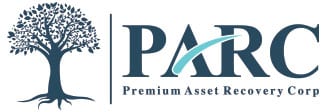RCM Best Practices Guide 2024

The Relationship Between Medical Factoring and Cash Flow
November 28, 2023
2024 Strategies for Negotiating and Settling Medical Debt
December 13, 2023Elevate Your Financial Health with RCM Best Practices
It’s a constant balancing act: providing excellent patient care while monitoring your practice’s financial well-being. Revenue Cycle Management (RCM) serves as a pivot point in this balance, ensuring that you don’t tip over into economic` instability while focusing on patient outcomes.
In this detailed guide, we will explore essential RCM best practices to maximize revenue without sacrificing quality of care. Our focus will be on efficient billing and coding, streamlined patient registration and appointment scheduling, and the indispensable role of regular financial audits.
So, buckle up as we dive into each of these areas. We’ll equip you with practical knowledge and actionable steps to enhance your revenue through optimized RCM practices.
Importance of Efficient Billing and Coding
Actionable Steps for Optimal Billing and Coding
Efficient billing and coding are more than back-office chores; they’re crucial for your revenue cycle. The first step toward efficiency is using an updated coding system compliant with industry standards. Ensure you use the latest ICD (International Classification of Diseases) and CPT (Current Procedural Terminology) codes to minimize errors and claim denials.
ICD codes are used to categorize and document diseases and other health conditions, providing a standardized language for diagnosis. On the other hand, CPT codes describe medical, surgical, and diagnostic services, offering a uniform language for billing and reporting medical procedures.
Implementing EHR and Coding Software
Investing in Electronic Health Record (EHR) systems and medical coding software can significantly streamline this process. These platforms often come with built-in error-checking features and can auto-update to reflect coding changes, keeping your practice current and reducing the likelihood of errors.
Regular Training and Audits
Regular staff training on the latest billing and coding protocols is equally essential. Encourage your team to pursue certifications and ongoing education in medical coding. Moreover, periodic internal audits can identify coding issues before they become significant problems.
By implementing these practices, you stand to benefit from quicker reimbursements, fewer denied claims, and a smoother revenue cycle. You’re not just maintaining administrative hygiene; you’re setting up your healthcare practice for financial stability and long-term success.
Streamlining Patient Registration and Appointment Scheduling
The Role of Digital Patient Registration
One of the most effective ways to lighten your administrative load and speed up the revenue cycle is through digital patient registration systems. By allowing patients to complete necessary paperwork online before their appointment, you streamline data gathering and reduce errors commonly arising from manual data entry.
Online Appointment Scheduling and Reminders
The value of online appointment scheduling is immense. Allowing patients the freedom to book or alter appointments via a digital platform not only lowers the rate of no-shows but also optimizes the allocation of healthcare resources. Pairing this with automated reminders through SMS or email keeps everyone in the loop, minimizing unused appointment slots and increasing operational efficacy.
Benefits of Automation and Integration
Automation goes hand-in-hand with integration. The scheduling software should be tightly knitted with the billing systems and Electronic Health Records (EHR).
Such integration ensures a seamless flow of patient data from one stage of healthcare service to another, simplifying the workload for administrative staff and lessening the chances of billing discrepancies. This recommendation is supported by Advantum Health’s guide on best practices for revenue cycle management, which emphasizes the importance of technology integration for efficient RCM processes (Advantum Health Guide).
By implementing these specific strategies, you do more than just make operations run smoothly. You’re elevating the patient experience, and a happy patient often equates to a recurring patient, which directly impacts your revenue streams.
Benefits of Regular Financial Audits and Reviews
The Need for Regular Audits
Financial audits may sound intimidating, but they’re essential for healthcare providers aiming to optimize their revenue cycle. Regular financial audits reveal your current systems’ strengths and weaknesses, offering insights into where you could improve.
Types of Audits
There are several types of audits to consider, each with its unique focus. Compliance audits ensure that you meet all legal and regulatory requirements, reducing the risk of costly fines and penalties. On the other hand, internal audits focus on operational efficiency, specifically looking at how well different departments manage resources and follow established protocols.
The Review Process
It’s not just about conducting the audit; it’s also about what you do with the findings. Typically, the results should be discussed in a comprehensive review meeting involving key stakeholders such as billing managers, compliance officers, and healthcare administrators. This is your opportunity to create an action plan based on empirical data.
Implementing Changes Based on Audit Findings
Once you’ve identified areas for improvement, the next step is to implement changes. This could mean updating your billing software, revising training programs for administrative staff, or even overhauling your entire revenue cycle process.
Whatever the action, it’s important to establish key performance indicators (KPIs) to measure the effectiveness of these changes over time.
Continual Monitoring and Adjustment
Don’t think of audits as a one-time event but rather an ongoing process. Continual monitoring allows for real-time adjustments, ensuring that your financial operations remain responsive to the evolving healthcare landscape. Keep an eye on those KPIs and be prepared to make further adjustments as needed.
The Tangible Benefits
The upfront investment in regular audits and reviews may seem steep, but the long-term benefits are significant. Fewer billing errors, reduced compliance risks, and a more efficient revenue cycle management system all contribute to a healthier bottom line. Moreover, an optimized revenue cycle creates a better patient experience, further increasing the likelihood of repeat visits and long-term patient retention.
By giving due attention to regular financial audits and reviews, healthcare providers set themselves on a path toward fiscal health and becoming a more streamlined and patient-centered practice.
The Importance of Data-Driven Approaches
In the age of digital healthcare, adopting a data-driven approach can significantly elevate the effectiveness of your financial audits and reviews. According to a study published in the National Center for Biotechnology Information, data analytics can provide “an opportunity to measure various performance metrics that are essential for the financial sustainability of healthcare organizations” (NCBI Study). The study emphasizes that “healthcare organizations with higher scores in financial performance metrics had a 47–128% higher chance of being financially sustainable.”
Leveraging Analytics for Financial Sustainability
By utilizing data analytics in your audits, you can understand performance metrics in a way that’s both comprehensive and insightful. This numerical approach helps you to pinpoint inefficiencies and revenue leakages more accurately than qualitative assessments alone. The study indicates that such an approach can vastly improve the odds of financial sustainability for healthcare organizations, reinforcing the role that financial audits play in the revenue cycle.
By incorporating data analytics into your regular financial audits and reviews, you’re not just following best practices; you’re fortifying the financial stability of your healthcare practice, ensuring its longevity and success in an ever-competitive landscape.
Conclusion
Managing a healthcare organization’s revenue cycle is a significant responsibility, but it can be tackled effectively. Efficient billing and coding practices serve as the cornerstone for financial health. Streamlined patient registration and scheduling processes further add to operational efficiency. These steps set the stage for a more robust bottom line.
However, the icing on the cake is regular financial audits enriched by data analytics.
The precision that data brings to these audits can be the difference between financial stability and uncertainty. If you’re looking to optimize your revenue cycle and set your healthcare practice on a sustainable financial path, actionable strategies like these are your go-to.
For a deeper dive into managing your healthcare revenue, check out PARC’s other blog posts.
By taking advantage of the strategies discussed here and the resources provided, you’re setting your healthcare practice on a course for financial success. Thank you for joining us on this exploration of the best RCM practices.
Additional Resources
American Medical Association: Billing and Coding Guidelines
Healthcare Financial Management Association: Best Practices for RCM
Sources
Advantum Health Guide on Revenue Cycle Management Best Practices


